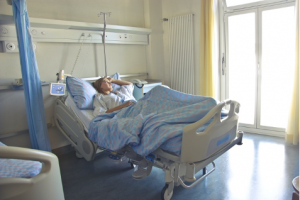Isolation and Client Care
When a client is in isolation, it can have a negative impact on the quality of care they receive from the healthcare team. It takes extra time to put on and remove PPE, which may hinder healthcare providers’ ability to assess or visit the client frequently in comparison to a client not in isolation. Healthcare providers should not assess the client from the door. Instead, it is important to take the time to put on PPE so you can go into the client’s room safely and check in on how they are feeling.
Family and friends may also decrease or limit their visits due to fear of being infected. It is the healthcare provider’s role to educate family and friends, thereby decreasing any fears or myths related to transmission. If visitors are unable to visit the client, find alternative methods to ensure the client does not experience loneliness or depression.
For example, connect the client with their family or friends over the phone, or on social media, or through live discussions via the internet. An alternative option is to request a volunteer, who is trained in infection prevention and control practices, to visit the client and provide psychosocial support through talking or activities.

Some clients may experience anxiety, depression, or sleep disturbance (PIDAC, 2012). Monitor for these signs and assist the client to find appropriate supports. Structuring activities or visits can help decrease the risk.
Another intervention is to continuously monitor the client’s symptoms and remove the additional precautions once it is safe and no longer required. Through effective interprofessional communication and documentation, the healthcare team can maintain focus on the client.

